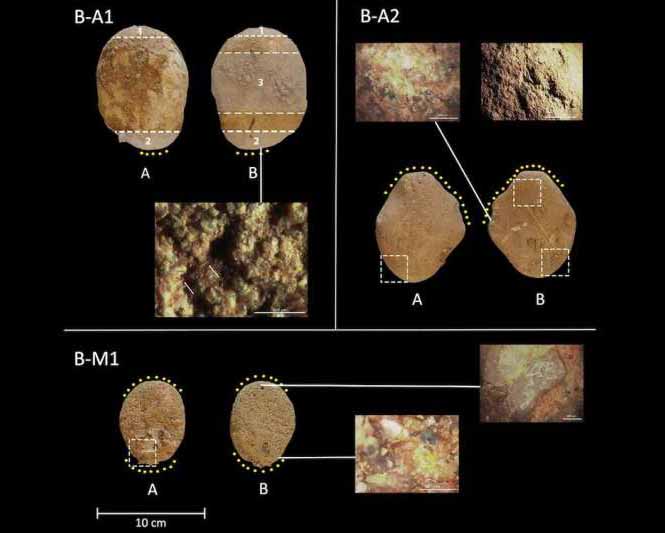 MONTREAL, QUEBEC—According to a statement released by the University of Montreal, analysis of tools found in Italy and dated to between 39,000 and 43,000 years ago suggests that modern humans and Neanderthals were producing flour in the region several thousand years earlier than previously thought. International research team member Julien Riel-Salvatore of the University of Montreal explained that the grindstones and pestles in the study were found in the Neanderthal layers of the site of Riparo Bombrini in northern Italy, and the modern human site of Grotta di Castelcivita, which is located more than 600 miles away in southwestern Italy. Starch granules of different kids, including wild cereals, were detected on the tools at both sites. The groups may have benefited from shared technical knowledge and foodways, but it is not known if there was contact between them. “Transforming cereals into flour is an important innovation because it allowed Paleolithic foragers to store and transport food more easily,” Riel-Salvatore said. “Pushing this behavior this far back in time really changes how we think about how these highly mobile people lived,” he concluded. To read more about people using flour before the advent of farming, go to "The First Bakers."
MONTREAL, QUEBEC—According to a statement released by the University of Montreal, analysis of tools found in Italy and dated to between 39,000 and 43,000 years ago suggests that modern humans and Neanderthals were producing flour in the region several thousand years earlier than previously thought. International research team member Julien Riel-Salvatore of the University of Montreal explained that the grindstones and pestles in the study were found in the Neanderthal layers of the site of Riparo Bombrini in northern Italy, and the modern human site of Grotta di Castelcivita, which is located more than 600 miles away in southwestern Italy. Starch granules of different kids, including wild cereals, were detected on the tools at both sites. The groups may have benefited from shared technical knowledge and foodways, but it is not known if there was contact between them. “Transforming cereals into flour is an important innovation because it allowed Paleolithic foragers to store and transport food more easily,” Riel-Salvatore said. “Pushing this behavior this far back in time really changes how we think about how these highly mobile people lived,” he concluded. To read more about people using flour before the advent of farming, go to "The First Bakers."
What Did Italy’s Neanderthals Eat?
